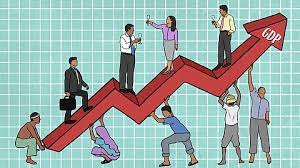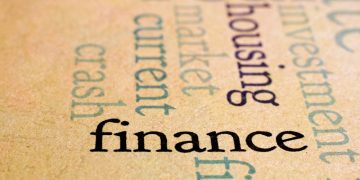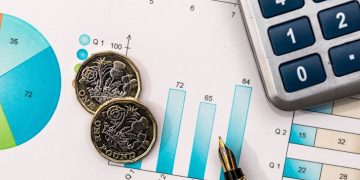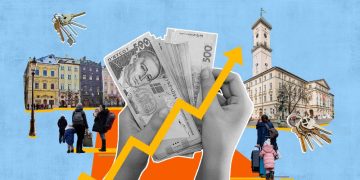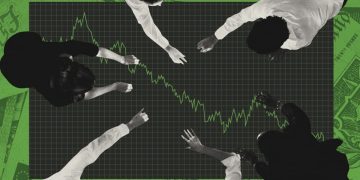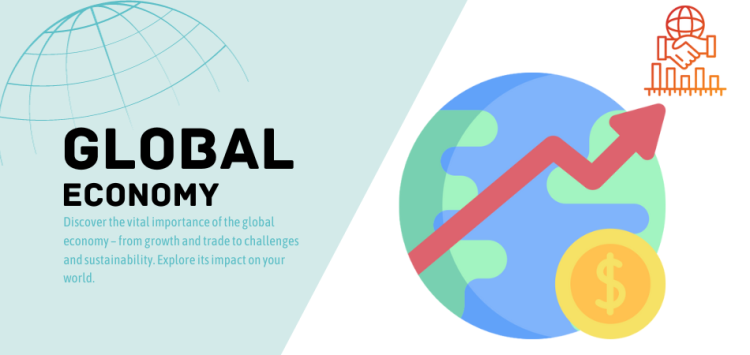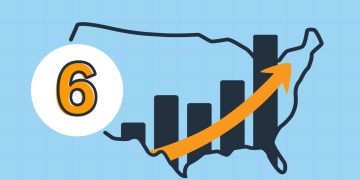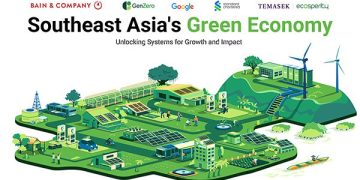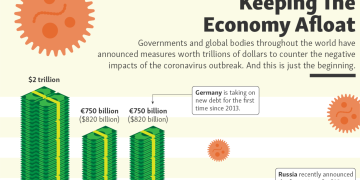A world running on spending
In an era marked by geopolitical tension, policy volatility, and slowing trade, the heartbeat of the global economy increasingly comes not from factories, ports, or stock exchanges—but from the wallets of ordinary households.
According to the International Monetary Fund’s World Economic Outlook (October 2025), global GDP growth is expected to decelerate from 3.3% in 2024 to 3.2% in 2025, and further to 3.1% in 2026. Yet within that slowing curve, one sector remains stubbornly resilient: private consumption.
Across continents, consumers are proving to be the last line of defense against economic stagnation. While exports falter and investment softens under the weight of uncertainty, household spending continues to prop up GDP in both advanced and emerging economies. But beneath this apparent stability lies a complex interplay of income dynamics, policy shifts, and behavioral change that could redefine global growth for the next decade.
The post-pandemic consumer engine
The global economy entered the mid-2020s with deep scars from the pandemic, yet also with new consumption habits. Between 2021 and 2023, massive fiscal stimulus and pent-up savings created a temporary surge in demand. That initial rebound has faded, but the structural effects remain:
- A digitally driven consumption model has emerged,
- Services have regained dominance over goods, and
- Consumers in emerging markets are showing stronger spending elasticity than those in the West.
According to OECD data, household spending still accounts for nearly 60% of global GDP—a figure that has remained stable even as investment and trade flows fluctuate. In the U.S., private consumption represents roughly 68% of total output, in the EU around 55%, and in emerging Asia between 45% and 60% depending on the country.
“Without consumption, the global economy would already be in contraction,” says Maria del Toro, an economist at the World Bank. “Household resilience is the unsung story of 2025.”
The geography of spending power
United States: Spending through the squeeze
In the United States, the engine of global demand, consumption has remained surprisingly robust despite inflation fatigue and high interest rates. Real personal consumption expenditure grew around 2.1% in Q3 2025, supported by rising wages and continued job market strength.
But there are cracks. Credit card delinquencies have risen to their highest level since 2012, while household savings rates—once inflated by pandemic stimulus—have fallen below 5%.
Retail data show a clear shift from goods to experiences: Americans are cutting back on durable goods purchases but spending more on travel, entertainment, and dining. “It’s a psychological pivot,” says David Meyers, a consumer economist at McKinsey. “People are seeking value and joy, not accumulation.”
Europe: Consumption under policy pressure
Europe’s consumption story is one of endurance under strain. Inflation moderation in 2025 brought some relief, yet energy costs and weak confidence continue to limit household outlays. Eurozone retail sales have stagnated, but services—particularly tourism and hospitality—are expanding again.
Countries such as Spain, Italy, and Portugal are experiencing a revival in domestic leisure spending, offsetting weaker manufacturing exports. The European Central Bank’s gradual rate cuts could stimulate credit-driven consumption in 2026, though fiscal constraints may temper that momentum.
Asia: The rise of the middle spender
Asia remains the most dynamic consumption story in the world. In China, household spending is gradually recovering after years of subdued confidence. Real retail sales grew 4.6% year-on-year in September 2025, boosted by e-commerce and domestic travel.
India, meanwhile, has emerged as the standout: IMF projects its GDP growth at 6.5% for 2025, with private consumption contributing more than half of that. Rising urban incomes, digital payment ecosystems, and an aspirational young population are redefining spending behavior.
Southeast Asia follows suit. Nations like Indonesia, Vietnam, and Malaysia are seeing sustained domestic demand, cushioning the impact of weaker exports. The World Bank notes that private consumption now contributes over 70% of Malaysia’s GDP growth, a pattern mirrored across the ASEAN region.
Structural tailwinds: Why consumption persists
1. Labor markets remain tight
Despite cyclical slowdowns, global unemployment rates remain historically low. The IMF estimates global joblessness at around 5%, near pre-pandemic levels. That tightness has supported wage growth, particularly in services. In the U.S. and Europe, real wages turned positive again in mid-2025, reinforcing purchasing power even as inflation lingers.
2. Digital ecosystems multiply consumer reach
The explosion of fintech, e-commerce, and on-demand services has lowered transaction friction and broadened market access. From India’s Unified Payments Interface (UPI) to Africa’s mobile money networks, digital platforms have democratized consumption.
McKinsey’s Global Digital Consumer Report 2025 notes that over 3.6 billion people now engage in digital commerce monthly—up from 2.5 billion in 2020.
3. Urbanization and demographic dividends
In emerging economies, rapid urbanization and a growing middle class continue to reshape consumption baskets. In Asia alone, an additional 300 million people are expected to join the middle-income bracket by 2030, driving demand for services, housing, healthcare, and leisure.
4. Behavioral inertia and “experience economics”
Sociologists describe a post-pandemic phenomenon called “experience normalization”: consumers have redefined what they consider essential, prioritizing experiences, wellness, and sustainability. This has shifted demand from products to services, from ownership to access, from accumulation to enjoyment.
Cracks beneath the surface
Yet the consumption story is not without fragility. Economists warn that household spending cannot indefinitely offset weakness in trade and investment.
Debt and credit risk
Global household debt surpassed $57 trillion in 2025, according to the Institute of International Finance (IIF). Rising interest rates have increased debt servicing costs, particularly in advanced economies. In South Korea and Canada, debt-to-income ratios exceed 180%. Even in the U.S., consumer credit balances reached record highs.
“This is a ticking clock,” says IMF analyst Rajiv Malhotra. “As long as wages rise faster than inflation, it’s manageable. But if job markets cool, the consumption engine could stall abruptly.”
Inequality and uneven recovery
Not all consumers are contributing equally. While upper-income households maintain strong discretionary spending, lower-income groups are constrained by food and housing costs. In many countries, fiscal support measures have expired, widening the consumption gap.
The OECD warns that inequality could dampen aggregate demand, as spending by the wealthy cannot fully compensate for suppressed mass-market consumption.
Inflation fatigue
Although inflation has eased globally—from 6.8% in 2023 to around 4.1% in 2025—it remains above central bank targets. Consumers are adapting, trading down to cheaper brands, delaying major purchases, and prioritizing essential categories. The “value-seeking consumer” has become the new normal.

The service shift: From goods to experiences
One defining feature of the current consumption era is the pivot from goods-based to service-based spending. In most advanced economies, services now account for over 65% of total household expenditure.
Travel, entertainment, and health-related spending are leading categories. The World Tourism Organization reported that global travel volumes in 2025 have recovered to 95% of pre-pandemic levels, with Asia-Pacific driving the resurgence.
Healthcare and wellness are booming as well: the global wellness industry is projected to exceed $6 trillion by 2027, powered by consumer interest in longevity, fitness, and mental well-being.
“People are not just consuming products—they’re consuming lifestyles,” says Fiona Zhang, consumer insights director at NielsenIQ. “This is a structural reorientation of global demand.”
Technology and the new consumption infrastructure
Digital technology is not merely facilitating consumption—it is reshaping its very infrastructure.
- E-commerce ecosystems have expanded beyond retail into groceries, healthcare, and education.
- AI-driven personalization is increasing conversion efficiency, as platforms anticipate needs before consumers articulate them.
- Subscription and platform economies are redefining ownership: from Netflix to automotive mobility services, recurring revenue models dominate.
In 2025, global e-commerce sales are estimated to reach $6.3 trillion, nearly doubling the 2020 figure. The spread of generative AI tools in marketing and logistics has compressed costs and amplified consumer engagement.
Yet the downside is growing digital inequality. While affluent consumers enjoy seamless online ecosystems, lower-income populations remain underconnected, creating a bifurcated global market.
Emerging markets: The consumption frontier
In much of the developing world, the story of consumption is also a story of empowerment.
Take India: household consumption grew by 7.2% in 2025, supported by rural digitization and government-backed welfare transfers. Southeast Asian economies like Vietnam, Thailand, and Malaysia are similarly leveraging digital inclusion to boost domestic demand.
Africa’s digital transformation is equally promising. Mobile payment penetration exceeds 70% in Kenya and Ghana, enabling new consumption pathways. “Digital financial inclusion is rewriting Africa’s consumption narrative,” notes a UNDP report from 2025.
Latin America presents a mixed picture: while consumption has recovered from the pandemic downturn, inflation and fiscal constraints continue to weigh on household confidence in Argentina and Brazil.
Consumption, sustainability, and climate awareness
A defining challenge for the next decade will be reconciling consumption-driven growth with environmental limits.
The IMF’s Sustainability Outlook 2025 warns that unchecked consumption patterns could derail climate goals, with global carbon emissions expected to rise by 1.8% in 2025 after a brief plateau.
Governments are experimenting with “green consumption” incentives—from carbon labeling to eco-tax rebates—to steer behavior without suppressing demand.
Consumers themselves are becoming more conscious. Surveys by Deloitte show that 57% of global consumers now consider sustainability when making purchasing decisions, up from 40% in 2020. The rise of “conscious consumption” is fostering new industries: sustainable fashion, renewable home products, and electric mobility.
Still, economists caution that green consumption cannot substitute for structural energy reform. “We cannot shop our way to sustainability,” quips environmental economist Julian Gross.
Policy undercurrents: Can governments sustain demand?
Fiscal and monetary policy remain critical to sustaining private consumption. In 2025, central banks are navigating a delicate balance: easing rates to support growth while avoiding a rebound in inflation.
In the U.S., the Federal Reserve signaled a mild policy pivot, cutting rates by 25 basis points in September 2025, citing “evidence of decelerating but resilient consumer activity.” The European Central Bank is expected to follow.
Meanwhile, fiscal authorities are under pressure. Pandemic-era savings buffers have thinned, and governments face high debt levels. The global public debt-to-GDP ratio hovers near 92%, limiting fiscal room for stimulus.
Emerging economies face even tougher trade-offs. Subsidy reforms, especially in countries like Malaysia and Indonesia, have restrained disposable income growth, even as they strengthen fiscal sustainability.
“The policy paradox is clear,” says OECD economist Laura Healy. “You need household demand to keep economies afloat—but the very policies that tame inflation or debt can choke that demand.”
Cultural shifts and the psychology of spending
Beneath the macroeconomic metrics lies a subtler transformation: the psychology of the consumer.
After years of volatility—from pandemics to wars to inflation—consumers have adapted by prioritizing control, comfort, and connection. This has manifested in several trends:
- The rise of “micro-luxury” spending—small indulgences amid uncertainty.
- Growing preference for authenticity over status.
- A boom in second-hand and circular economies.
Platforms like Depop, Vinted, and Taobao’s Idle Fish have turned resale into a cultural norm, blending thrift with identity. Analysts argue this is not a temporary adjustment but a generational shift: Millennials and Gen Z value sustainability and personalization more than accumulation.
Risks ahead: Can consumption keep carrying the load?
Economists increasingly warn that relying too heavily on household spending is risky. Consumption-driven growth can mask weak investment, declining productivity, and fiscal imbalances.
In several economies, consumption is sustained by debt rather than income. If labor markets weaken or credit costs rise further, the correction could be severe.
There’s also the question of diminishing marginal stimulus: after years of strong demand, consumers may simply plateau. “You can’t consume your way to infinite growth,” notes IMF senior advisor Helene Dupont. “We’re entering a phase where innovation and productivity must take over.”
The decade of the consumer — and its limits
Despite its fragility, the persistence of private consumption is a testament to human adaptability. Households have weathered pandemic disruptions, inflation surges, and policy swings—all while redefining the nature of prosperity.
As we move toward 2030, the world economy may no longer be powered by factories or financial engineering alone. Instead, it will rely on billions of micro-decisions—each purchase, subscription, and click that expresses confidence, identity, and hope.
The challenge for policymakers will be to convert that spending power into sustainable progress: strengthening labor markets, reducing inequality, and aligning consumption with planetary limits.
The consumer may have saved the global economy in 2025—but in doing so, they’ve also inherited its heaviest burden.



